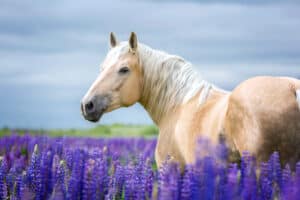Have you heard of wild brumbies and wondered how they differ from a standard horse? Look no further. Today, we’re going to discover Australia’s feral horses, how they live, and why some consider brumbies a pest.
What Is a Brumby?
In the simplest terms, a brumby is one of Australia’s feral horses. They have no owner and roam freely in the bush.
But horses are not Australian natives. They’re a legacy of colonialism.
Horses arrived in Australia with the First Fleet in 1788. As Australia was explored and colonized, working horses were shipped across. At this point in time, farm machinery was unmotorized, so horses or oxen supplied the muscle. In order to create farms, settlers needed horsepower.
If you’re wondering about the First Fleet, which comprised 11 British ships carrying convicts and colonists (and horses) to Australia. It took 250 days, so only the toughest horses made the trip alive.
However, some of these early horses escaped. The majority of Australian settler farms had no fences, so horses could wander off. In 1804, the first recorded instance of missing horses was declared, so we can see horses started to escape not long after they first arrived.
With the introduction of machines, farmers no longer needed horses, so many abandoned them, and these horses joined the herds already surviving in the bush. Descendants of the escapees and abandoned horses are today’s wild brumbies.
In addition to horses, imported donkeys, which were used as pack animals, escaped, and with the rise of motorized transport, they were abandoned, too. Wild donkeys formed herds; the first reports filtered through in the 1920s. In 1949, the government declared them a pest.
During WW1, Europe’s horse population dramatically dipped due to their use on the battlefields, but brumbies weren’t used that often. Instead, Australia used Walers that were more suited to carrying riders and pulling transport.
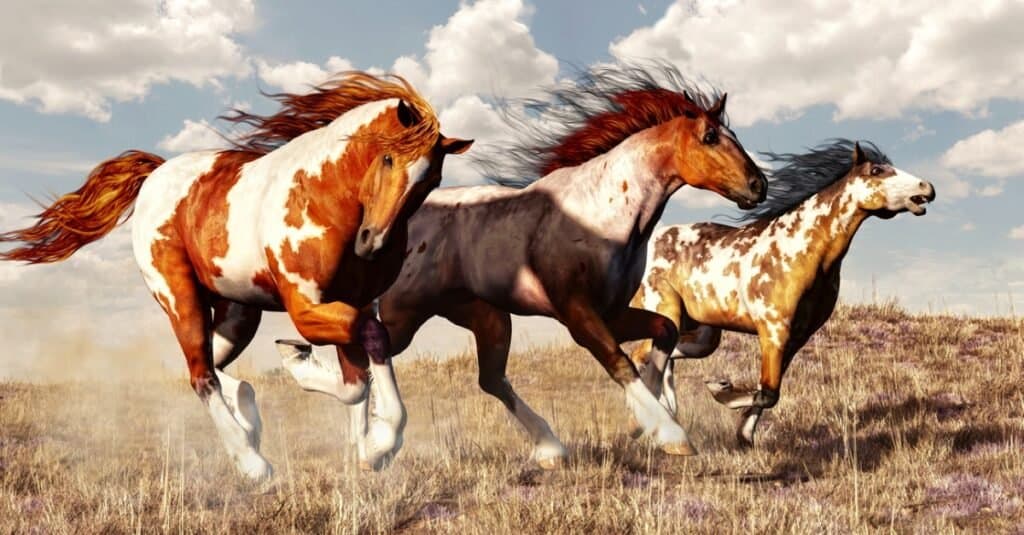
Brumbies are the descendants of European settlers’ horses.
©iStock.com/Daniel Eskridge
What Are Brumbies Called in America?
Australia isn’t the only country to host wild horses. In the United States, they’re named mustangs, and the UK is home to wild ponies that roam the moors. The difference is that horses are native animals there.
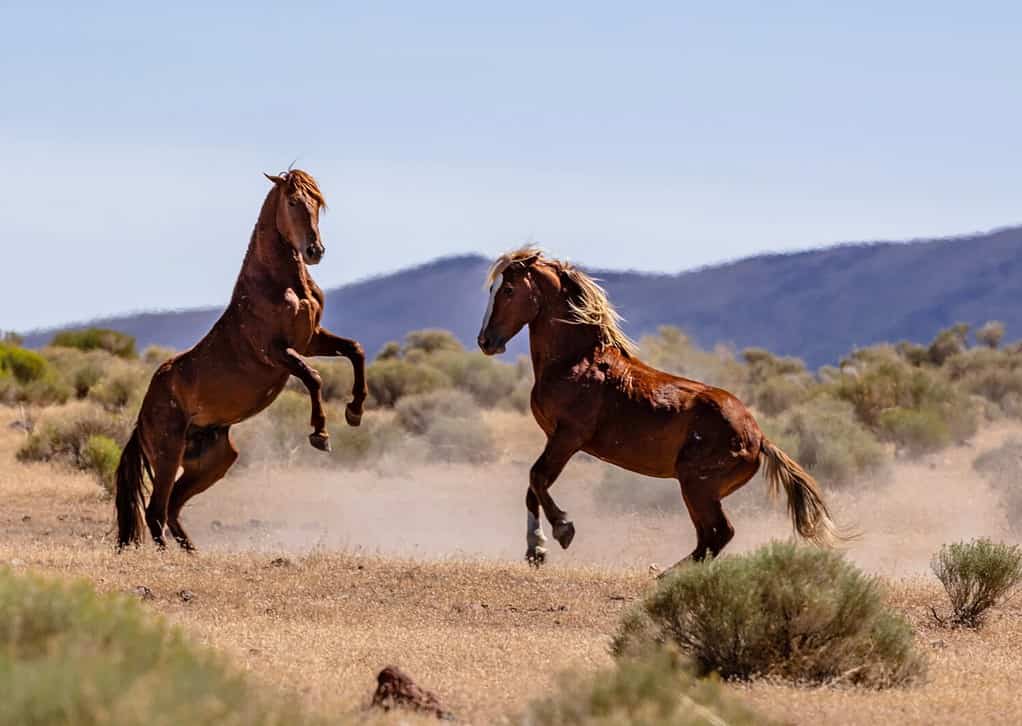
In the U.S., wild horses are called mustangs.
©Que Images/Shutterstock.com
What’s the Difference Between a Horse and a Brumby?
A brumby is a free-roaming Australian horse without an owner. It’s not a special breed.
The name is taken from Private James Brumby, an early explorer. His horses roamed free and adapted to free-range life. Then, when he transferred from New South Wales to Tasmania in 1804, he left the horses behind.
As settlers and explorers spread across Australia, wild brumbies followed in their wake. All horse breeds mingled to create a wide range of genetic influences, from Arabians to Clydesdales to Timor ponies and more. Today, brumbies take on a wide variety of colors, sizes, and temperaments from their mixed heritage.
How Many Brumbies Are There?
The Australian government states at least 400,000 brumbies roam the country. Rangers believe 18,814 of them live in Kosciuszko National Park, up from 1,000 in the 1990s.
What’s the Problem with Australia’s Brumbies?
Because brumbies aren’t native, they threaten the ecosystem. The topic of wild brumbies is contentious, with two strongly felt camps advocating their beliefs. Let’s take a look at each side’s argument.
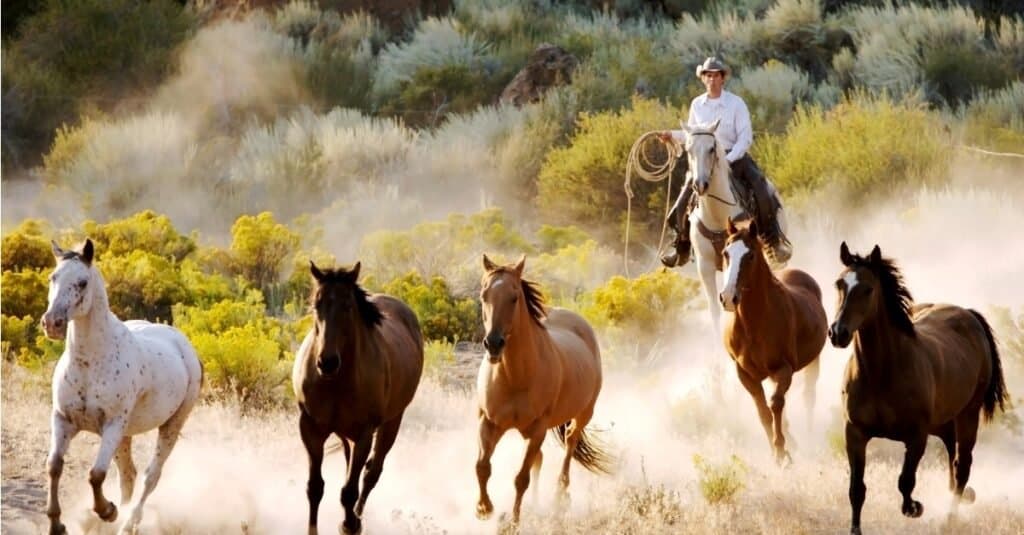
Brumbies’ hard hooves destroy watering holes and threaten native animals’ survival.
©iStock.com/jeannehatch
Are Brumbies Pests?
This is a controversial question.
Many scientists, environmentalists, and the Australian government believe brumbies destroy water sources and native wildlife and, therefore, must be culled. Brumby supporters say it’s an attack on Australia’s heritage and inhumane.
Let’s delve further.
Pro Cull
The government states brumbies are environmental pests (wild donkeys, too) because their hard hooves cause damage and erosion to native vegetation. Their presence fouls waterholes and spreads weeds in dung and coats. They also outcompete native or endemic animals, like the endangered corroboree frog and broad-toothed rat, for food and water.
Feral horses travel large areas, so they carry out this destruction over a wide range, including ecologically sensitive areas like Kosciuszko National Park. It worsens during drought season when they quickly degrade the few water sources available for native plants and animals.
Other issues include their impact on farming land. Feral horses eat crops, push over fences, and panic cattle in the muster. Brumbies are disease vectors, too. They carry equine flu, African horse sickness, and tick fever that makes domestic horses, and sometimes cattle, very sick.
To curb their numbers, the government carries out culls via shooting or transporting them to slaughterhouses. This often occurs during drought periods, when they gather at watering holes, but some of the younger feral horses are rehomed.
Anti Cull
On the other side of the debate are the brumby supporters, many of whom believe that brumbies have earned their place in Australia. Because they’ve lived there for centuries, supporters believe brumbies are living history and part of its national culture.
Of course, the humane aspects raise strong feelings, too. Supporters believe brumbies have the right to life. Rangers have faced stalking and death threats, particularly after the recent overturn of the ban on aerial shooting of wild horses (by trained marksmen from helicopters).
Brumby preservation societies campaign against the culls and find homes for brumbies where they can. They make excellent companion horses and, when adopted from a young age, are great endurance riding horses, too.
What Predators Do Brumbies Have?
None. Australia doesn’t have large predators capable of catching a wild brumby, although wild dogs and dingoes may take foals. Venomous snakes occasionally bite horses, too.
However, drought, parasites, floods, and wildfires have a devastating impact on brumbies.
During the drought season, brumbies struggle to find enough water and food. Old, young, and sick brumbies suffer in the heat and, in desperation, eat toxic plants. Wildfires and floods take brumby lives too. Experts think very few make it past the age of 20.

Wildfire is a real threat to wild brumbies.
©The-Vagabond/iStock via Getty Images
What Is The Silver Brumby?
The Silver Brumby is a book and TV series written by Elyne Mitchell about a wild brumby called Thowra and a man who longs to tame it. The brumby has a cream coat and a silver mane and tail.
Where Can I See Brumbies?
Most brumbies live in the Northern Territory and Queensland, in cattle production areas, but pockets turn up in Western and South Australia, New South Wales, and Victoria, too.
Brumby fans can contact wild horse tours and sanctuaries across Australia to see them in their natural habitat.
Large brumby numbers congregate in:
- Australian Alps
- Victoria’s Alpine National Park
- Barrington Tops National Park
- New South Wales’ Kosciuszko National Park
- Queensland’s Carnarvon National Park
And let’s not forget those wild donkeys! Approximately five million gather in Central Australia, Top End in the Northern Territory, and the arid lands of Western Australia’s Kimberly.
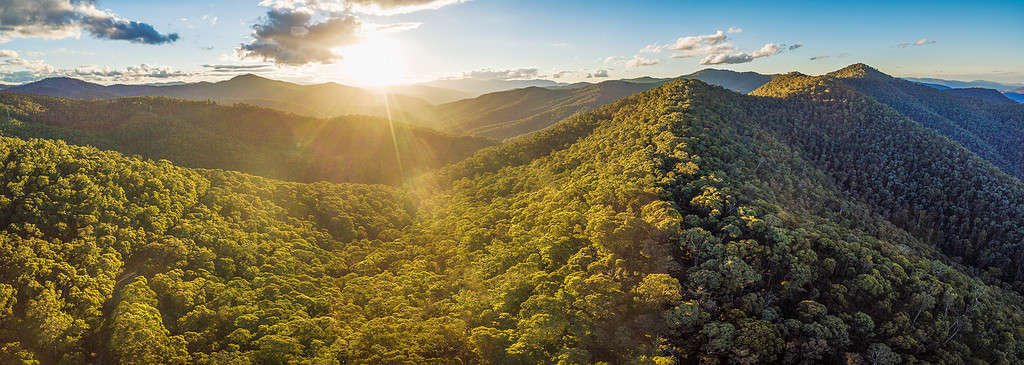
Wild horses live in the Australian Alps and National Parks.
©Greg Brave/Shutterstock.com
Brumby: Species Overview
Much about wild brumbies is synonymous with horses because they are horses! However, there are a few differences between these free roamers and domesticated horses.
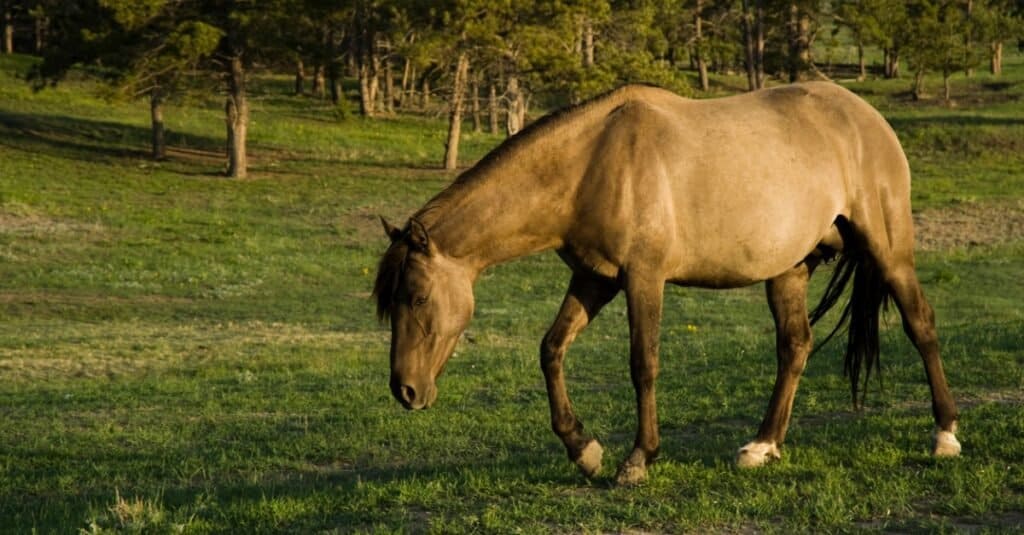
Brumbies eat grasses, roots, fruits, bark, and buds.
©iStock.com/karenparker2000
Diet
Herbivorous Australian brumbies graze grasses, buds, roots, bark, and fruit. Oat grass is a brumby favorite. They’ll graze for 15 hours a day and drink liters of water in one go. Foals drink their mother’s milk and begin to wean onto grasses at four to six months old.
Food scarcity is a problem for brumbies, especially in drought season. Some support groups offer supplementary food in the lean months.
Habitats
Brumbies inhabit grass and shrublands with clean, fresh water and lots of pasture.
They congregate in tropical grasslands, temperate areas, wetlands, rocky outcrops, semiarid plains, and subalpine forests. In farmed areas, when natural food supplies run short, brumbies visit cattle farms to eat and drink. This brings them into conflict with landowners.
Size
Due to their colorful heritage, brumbies come in all sizes. In the remote outback, stallions can reach 16 hands, but on average, they reach 13 to 15 hands high.
Herds
Brumbies form herds, called mobs or bands, with strong social structures. A dominant stallion controls a herd comprising three or four mares plus their foals. Often, a group of young males stick together and cover a wider area than the family herds. A bachelor stallion group territory can cover 34 square miles. In times of drought, herds will move further afield for resources.
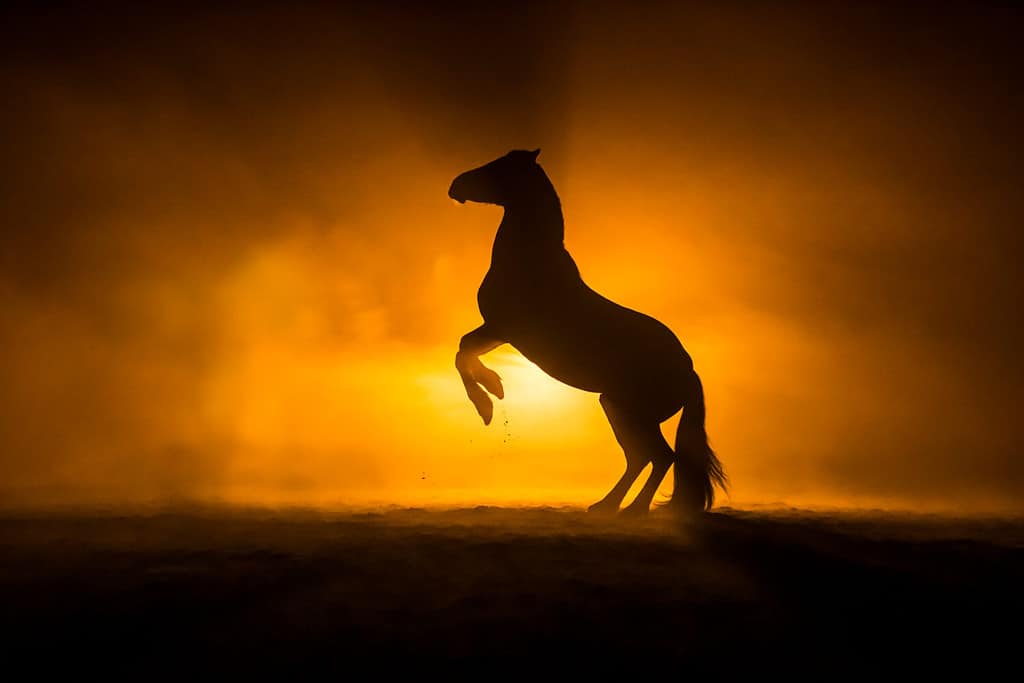
Due to their mixed-breed heritage, brumbies are born in all colors and many different sizes.
©PIC by Femke/Shutterstock.com
The photo featured at the top of this post is © BHamms/Shutterstock.com
Thank you for reading! Have some feedback for us? Contact the AZ Animals editorial team.




